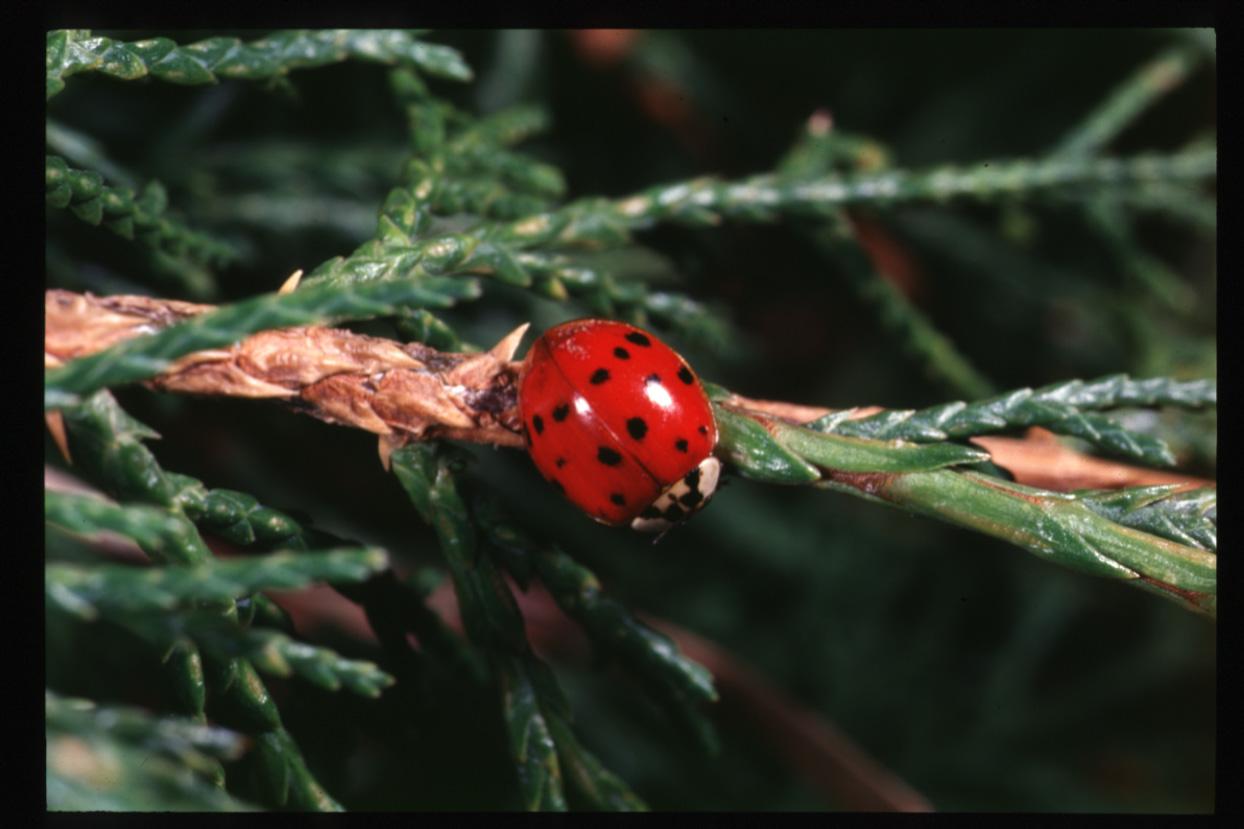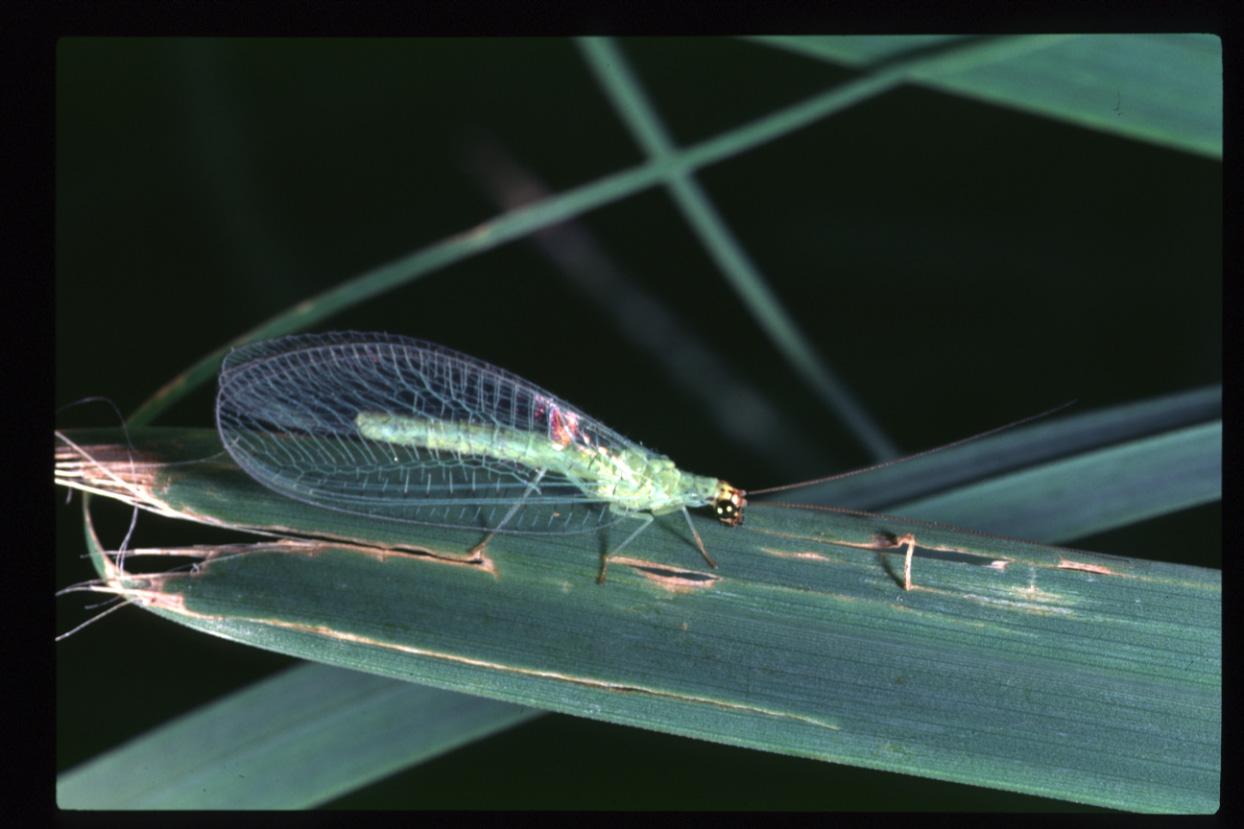Beneficial insects -- They're good bugs
Beneficial insects -- They're good bugs

Lady Beetle. Photo by Monte Johnson, UK Extension entomologist

Green Lacewing. Photo by Monte Johnson, UK Extension entomologist
Beneficial insects have a lot of things going for them. Unfortunately, many "beneficials" are destroyed because they are mistaken for insect pests that damage agricultural crops and home garden areas.
"Not all insects are pests. In fact, we receive some benefits from the majority of insects," said Ric Bessin, entomologist with the University of Kentucky College of Agriculture.
"Beneficial insects provide a cheap, constant source of insect pest control and often reduce the need to use an insecticide," Bessin said. "'Beneficials' constantly are working for us. Long before we'd notice a few aphids or do anything about the problem, these 'good bugs' are out there fighting aphids and other insect pests."
In addition to being natural enemies, such as parasites and predators, of insect pests, "beneficials" pollinate crops and flowers, help decompose organic materials such as compost piles, and serve as members of wildlife food webs. Others are aesthetically pleasing organisms like butterflies, according to Bessin.
"Many insects people see in late summer are 'beneficials' whose populations have built up because they've been feeding on pests all season," he added. "It's tragic when someone shows me what they've sprayed for and it's a beneficial insect. We need to encourage beneficial insects. It's just as important to recognize 'beneficials' as it is to identify pests."
Green lacewings, most lady beetles, spiders and bees are among the common 'beneficials' in Kentucky, according to Bessin.
"Green lacewings are one of the important "beneficials" we commonly see in late summer," he said. "They are among our most important predatory insects because they feed on a variety of soft-bodied insect pests such as aphids and mites. Found on many crop plants, green lacewings are particularly common on tobacco. If fact, I often find a lacewing hitchhiking on my shirt after I've monitored a field for aphids."
An adult green lacewing is about three-fourths inch long with a green body, lacy wings and characteristic golden eyes. Its brown and white larvae might grow up to one-half inch long. They resemble tiny crocodiles with sickle-shaped jaw bones.
Lady beetles are another important group of mostly beneficial insects. However, the Mexican bean beetle is an exception to the beneficial category, according to Bessin.
"Lady beetles, sometimes called lady bugs or lady bird beetles, are our first line of defense against many common pests," he said. "They feed on insect eggs and larvae, mite eggs and mites, scale, mealybugs, corn borer larvae and other soft-bodied pests -- the list just goes on and on. If their favorite insects aren't available, some lady beetles will feed on things like pollen, but won't damage plants."
Adult lady beetles are red or orange with black or brown spots. Females lay orange eggs. Larvae, which resemble extremely small alligators, usually are brown or black and have orange, red or tan markings.
"The Mexican bean beetle, unlike its insect-devouring cousins, feeds only on bean plants. This beetle is an unwelcome sight in soybean fields where adults and larvae feed primarily on the undersides of leaves. The Mexican bean beetle sometimes is a pest of garden beans as well," Bessin said.
The adult beetle is brown with eight black spots arranged in three rows on each wing
cover. Its larvae, unlike other lady beetles, are bright yellow with black branched spines.
"Although some people are quite afraid of spiders, these beneficial arthropods don't feed on or do any harm to plants. Instead they capture prey such as flies and moths that land in their webs," he said.
Parasitic wasps are another group of beneficial insects. The small to medium-sized wasps help control several crop pests. For instance, one type attacks the tomato hornworm, a major pest of tomatoes and tobacco.
"In some situations, what is an insect pest to one person can be a beneficial insect to someone else," he added. "For instance, the parsley worm feeds on parsley and carrot tops but the adult is the black swallowtail, a prize in butterfly gardens. While the honeybee may be considered a serious threat to people with allergic reactions, it pollinates many of the food crops, flowers and vegetables that bring us pleasure. The Asian lady beetle, considered an indoor pest during the winter, is a beneficial insect in the garden and landscape where it devours aphids and scale during the summer.
"Without 'beneficials,' we would be plagued with insect pests just about every day. 'Beneficials' are a valuable resource so think twice before spraying what might be a 'good bug.' The county Extension office can possibly help you determine whether it's a beneficial before you use an insecticide."